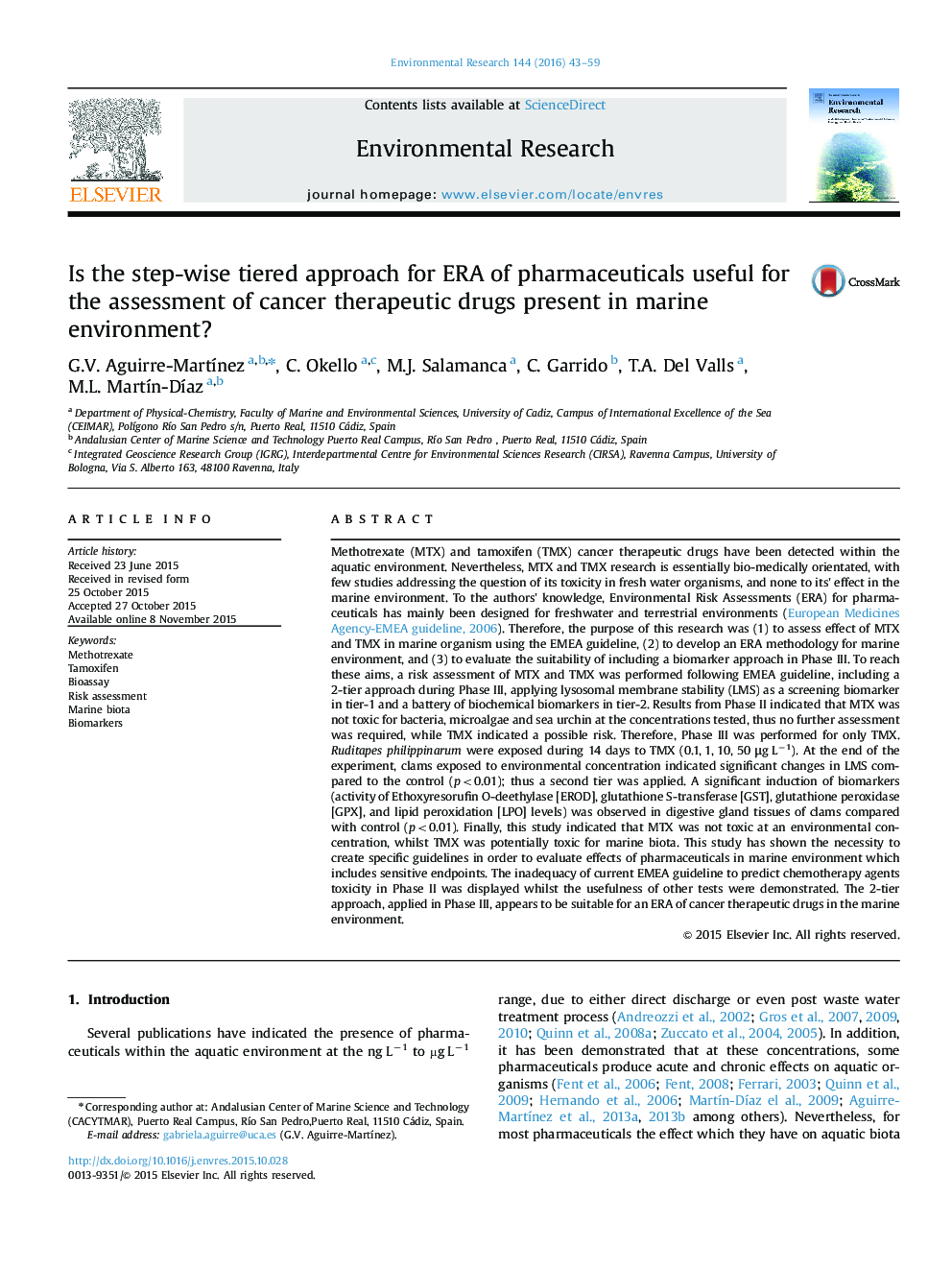| کد مقاله | کد نشریه | سال انتشار | مقاله انگلیسی | نسخه تمام متن |
|---|---|---|---|---|
| 4469668 | 1314296 | 2016 | 17 صفحه PDF | دانلود رایگان |

• Acute endpoints were inadequate to evaluate effects of methotrexate in marine biota.
• Sea urchin larval development endpoint was useful to predict toxicity of tamoxifen.
• Environmental concentration of tamoxifen was toxic for marine organisms.
• Step-wise approach was inadequate to predict toxicity of methotrexate.
• Screening and biochemical biomarkers were adequate for ERA of tamoxifen.
Methotrexate (MTX) and tamoxifen (TMX) cancer therapeutic drugs have been detected within the aquatic environment. Nevertheless, MTX and TMX research is essentially bio-medically orientated, with few studies addressing the question of its toxicity in fresh water organisms, and none to its' effect in the marine environment. To the authors' knowledge, Environmental Risk Assessments (ERA) for pharmaceuticals has mainly been designed for freshwater and terrestrial environments (European Medicines Agency-EMEA guideline, 2006). Therefore, the purpose of this research was (1) to assess effect of MTX and TMX in marine organism using the EMEA guideline, (2) to develop an ERA methodology for marine environment, and (3) to evaluate the suitability of including a biomarker approach in Phase III. To reach these aims, a risk assessment of MTX and TMX was performed following EMEA guideline, including a 2-tier approach during Phase III, applying lysosomal membrane stability (LMS) as a screening biomarker in tier-1 and a battery of biochemical biomarkers in tier-2. Results from Phase II indicated that MTX was not toxic for bacteria, microalgae and sea urchin at the concentrations tested, thus no further assessment was required, while TMX indicated a possible risk. Therefore, Phase III was performed for only TMX. Ruditapes philippinarum were exposed during 14 days to TMX (0.1, 1, 10, 50 μg L−1). At the end of the experiment, clams exposed to environmental concentration indicated significant changes in LMS compared to the control (p<0.01); thus a second tier was applied. A significant induction of biomarkers (activity of Ethoxyresorufin O-deethylase [EROD], glutathione S-transferase [GST], glutathione peroxidase [GPX], and lipid peroxidation [LPO] levels) was observed in digestive gland tissues of clams compared with control (p<0.01). Finally, this study indicated that MTX was not toxic at an environmental concentration, whilst TMX was potentially toxic for marine biota. This study has shown the necessity to create specific guidelines in order to evaluate effects of pharmaceuticals in marine environment which includes sensitive endpoints. The inadequacy of current EMEA guideline to predict chemotherapy agents toxicity in Phase II was displayed whilst the usefulness of other tests were demonstrated. The 2-tier approach, applied in Phase III, appears to be suitable for an ERA of cancer therapeutic drugs in the marine environment.
Journal: Environmental Research - Volume 144, Part A, January 2016, Pages 43–59